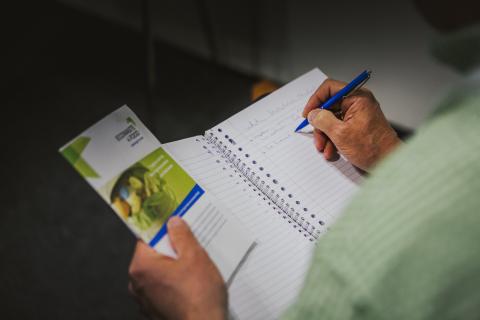
About the programme
Welcome to our help and guidance section. Click through the questions below and find out more about the Interreg Europe programme.
Watch our video about the programme
Programme structure
The managing authority of Interreg Europe is the Conseil Régional Hauts-de-France, Lille, France.
The programme's joint secretariat is located in Lille, France. The secretariat provides operational support to the programme's managing authority. In addition, the secretariat works closely with the 36 Partner States, often through a point of contact which is established in most of them.
A launch event took place online on 24-25 November 2021. The interregional cooperation forum ‘Europe, let’s cooperate!’ presented the results of Interreg Europe 2014-2020 and it officially launched the new programme for 2021-2027.
We submitted the programme to the European Commission on 5 January 2022. The programme was approved on 8 July 2022.
Interreg Europe is one of many Interreg programmes. The other programmes support cooperation between regions within smaller geographical areas (cross-border or transnational). Interreg Europe is not an umbrella programme for the others. This role is in the hands of Interact, which provides technical support to all Interreg programmes, including Interreg Europe.
Programme documents
Download the key documents of the programme.
Programme manual.pdf
2021-2027 Interreg Europe programme manual and its annexes. Version 4, December 2024. Click Ctrl + F5 if you still see version 3.
Programme funding
The programme has MEUR 394 to co-finance interregional cooperation projects, policy-learning services provided by its Policy Learning Platform, and the technical assistance needed for the implementation of the programme. Over MEUR 340 is earmarked for project funding and MEUR 17 will support the Platform's activities.
The project activities are co-financed by the EU funds at either 70% or 80% depending on the legal status of the project partner.
Partners from Norway are not eligible to receive funding from the EU but may receive co-financing of up to 50% from pre-allocated national funds.
Co-financing rate |
Eligible project partner according to legal status and location |
|
80% ERDF |
Public bodies and bodies governed by public law from all 27 EU member states |
|
70% ERDF |
Private non-profit bodies from all 27 EU member states |
|
Up to 50% Norwegian funding |
Public bodies, bodies governed by public law and private non-profit bodies from Norway |
|
Swiss funding |
Partners from Switzerland are invited to contact the Swiss Interreg national point of contact to receive information on Swiss funding opportunities |
The national contribution has to be provided by the partner organisations themselves. It is up to these organisations to find this contribution. In some countries, there may be provisions to fund fully or partly fund the national co-financing required. This information should be checked at national level through the Partner State's points of contact.

What do we fund?
See what type of projects we fund and how you can apply to our programme.
Programme area
The Interreg Europe cooperation area covers the whole territory of the European Union with its 27 member states, including their insular and outermost areas, as well as Albania, Bosnia and Herzegovina, Moldova, Montenegro, North Macedonia, Norway, Serbia, Switzerland and Ukraine.
The general rule is that partners from non-EU countries can participate in Interreg Europe at their own costs.
Partners from Norway can make use of their national funds.
Swiss partners should refer to the Swiss national point of contact in order to learn more about the availability of Swiss funds.